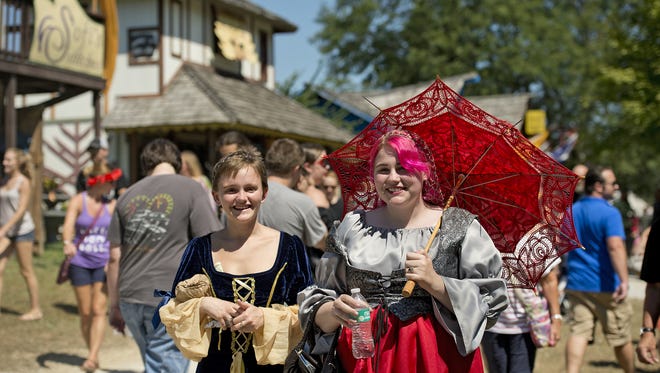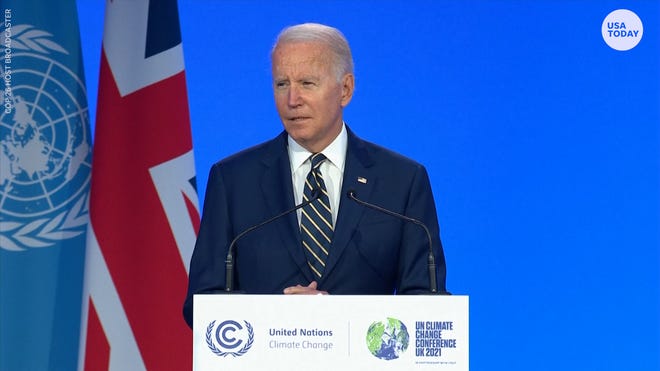

1. Ohio Renaissance Festival
Last year, a plague swept across the land, causing the townspeople of Willy Nilly on the Wash to bar their doors, but this year, festivities return to the 16th century village. The Ohio Renaissance Festival boasts more than 300 costumed performers and 14 stages with over 100 shows daily – everything from live music, dueling swordsmen and free-flying birds of prey to rowdy pirates, classic literary tales in the mud, comedy knife throwing and yes, full armor jousting.
With over 150 master artisans and craftsmen – whose items are handmade to specific criteria in keeping with the Renaissance time period – this is also the place to pick up chainmail, corsets, kilts, period jewelry, medieval and Renaissance-themed board games, swords, knives, clothing and more. You'll find plenty of restaurants and pubs where you can grab an ale and gnaw a turkey leg to your heart's content, and try your hand at games of chance and skill.
The family-friendly festival runs 10:30 a.m.-7 p.m. Saturday-Sunday through Oct. 31 at 10542 E. Ohio 73, Harveysburg. This being Labor Day weekend, the festival will also be open on Monday. Admission is $19 for adults and $7.50 for ages 12-under. renfestival.com.

2. Lunken Airport Days
See historic military and civilian aircraft on display this weekend – jets, warbirds, sport airplanes and helicopters – as well as vintage military vehicles and classic cars during Lunken Airport Days. View them up close, sit inside and even take a ride in a B-25 from WWII or helicopter (advance registration required). Pilots, mechanics, and air traffic controllers will be on hand to answer questions, there will be a color guard ceremony at noon each day, and you'll find vendors, food trucks and family-friendly activities.
Lunken Airport Days is free and open to the public. It runs 10 a.m. to 4 p.m. Saturday-Sunday at Lunken Airport (262 Wilmer Ave., East End). Flight experiences are offered through Monday and cost extra. To book a ride, call 800-359-6217 or email [email protected]; warbirds.clubexpress.com.

3. Western & Southern WEBN Fireworks at Riverfest
The last blast of summer takes place along the banks of the Ohio River on Sunday with a day-long party culminating in one of the most impressive choreographed fireworks displays in the country. And whether you choose to stake out your spot in Cincinnati, Newport or Covington, you're sure to find plenty to do and see.
On the Cincinnati side, a family-friendly festival spans the riverfront along Sawyer Point Park and Yeatman's Cove (705 E. Pete Rose Way) from noon-10 p.m. Sunday. Note that everyone entering the area is subject to inspection. Oversized bags, luggage and backpacks are a no-no. If you prefer to avoid Downtown, Cincinnati Parks hosts Riverfest West at Mount Echo Park (381 Elberon Ave., East Price Hill), featuring kid-friendly activities, live music and great views of the fireworks, which launch at 9 p.m. from barges on the river.
4. Smoke on the Water BBQ Fest
In Kentucky, the best place to watch the fireworks is Festival Park at Newport on the Levee (One Levee Way). That is, unless you want to be right on the water. BB Riverboats is offering a fireworks cruise that boards at 4 p.m. Sunday at a cost of $160 per person. There's also a brand new festival running all weekend at Covington Plaza (144 Madison Ave.) where barbeque is the star. Smoke on the River BBQ Fest runs 5-11 p.m. Friday and noon-11 p.m. Saturday and Sunday with live music and lots of good eatin'. cincinnatifestivalsandevents.com; bbriverboats.com.
If you don't feel like fighting the traffic, why not consider hopping the Fireworks Train? It leaves Eagles Station (2863 Harris Place, Norwood) at 6 p.m. Sunday and runs along the former Pennsylvania RR's "Oasis" line to Montgomery Inn. Concessions available for purchase onboard. Passengers disembark for the fireworks, then return; a trip duration of 6 hours. It costs $35-$60. lebanonrr.com.

5. Terror Town
Yeah, it might seem early to be thinking about Halloween, but in the words of industrial goth band Ministry, "Every Day is Halloween" and nowhere is this more evident than at Terror Town, which opens this weekend in Williamsburg. Enjoy the sights and sounds of a 19th century Old West town where you can eat, drink, shop, play games and enjoy some live music and "Scary-O-Ke" while you await your turn on the trail.
The trail experience is an immersive haunted attraction where you'll encounter mad scientists, doctors, cultists and more. If the usual haunted attraction is too tame for you, opt for an enhanced experience where you might find yourself locked in an asylum cell, covered in blood or even buried alive. Enhanced experiences are designated by a gold or red wristband. Those upgraded to gold will be covered head to toe in a bloody mess, while those bearing red bands will also be subjected to physical contact. Terror Town is open 7 p.m.-2 a.m. Friday and Saturday through Nov. 6 at 1449 Greenbush Cobb Road, Williamsburg. Ages 16-up for basic and gold experience, ages 18-up for red experience. Tickets are $25-$35. 513-304-0444; allhallowsevellc.com.

Honorable mention: Cincinnati Hispanic Festival
After taking 2020 off due to the pandemic, the Cincinnati Hispanic Festival returns for its 27th year. You'll find great food, live music, dancing and fun activities for the whole family. It happens from noon-10 p.m. Sunday at St. Boniface Church, 1750 Chase Ave., Northside. Admission is free. stbonifacecincinnati.com.
Source link







